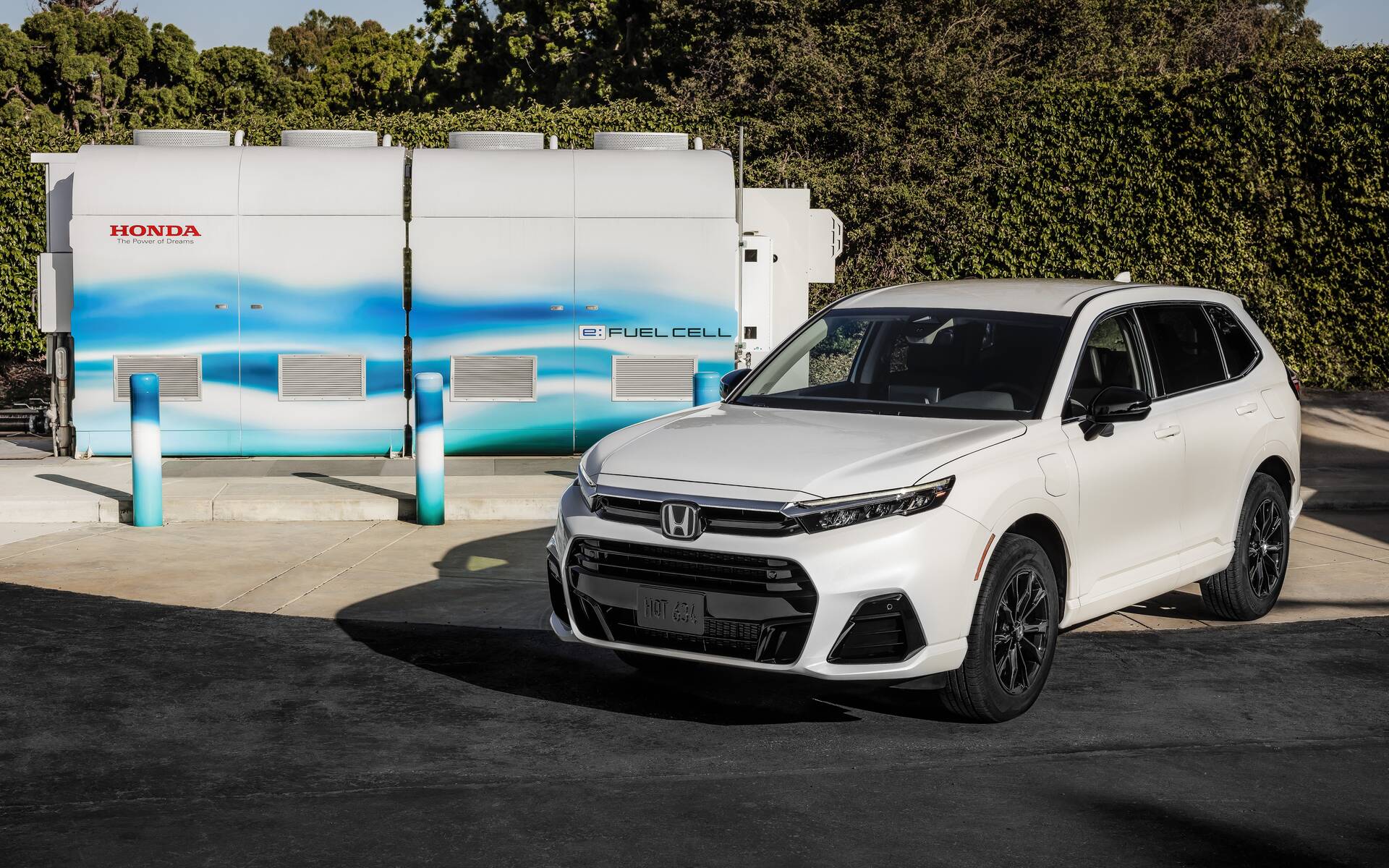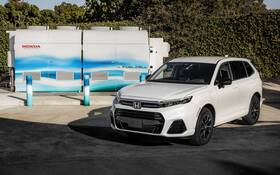2025 Honda CR-V e:FCEV Debuts With Both Fuel Cell, Plug-in Tech
Honda has funny plans involving its popular compact SUV. Remember the 800-horsepower CR-V Hybrid Racer with IndyCar tech from last year? Now, meet the hydrogen-fuelled CR-V that will be available for customer leasing in California beginning later this year as a 2025 model.
We first reported about this vehicle back in November 2022, but today the so-called CR-V e:FCEV made its official debut. To be clear, Honda has no intention to bring it to Canada.
- Also: Podcast: Slowing EV Demand, Manufacturers Backing Out of Electrification Plans - The Industry's Current State of Affairs
- Also: 2024 Honda CR-V Hybrid: Good, But Not the One You Should Buy
Unlike the late Clarity Fuel Cell sedan that Honda briefly sold south of the border, this new CR-V combines a fuel cell system with a high-voltage 17.7kWh battery that can be replenished using a level-2 charger or a standard power outlet just like a regular EV or PHEV. The latter enables a modest 47 km of range, while total range with a full 4.3 kg of hydrogen is estimated at 435 km according to the EPA.

Compromises
Output is rated at 174 horsepower, which is less than a gas-powered CR-V, while peak torque amounts to 229 lb-ft, not surpassing the CR-V Hybrid. The electric motor drives the front wheels only. Honda has failed to mention acceleration times, so we’re left to wonder just how quick this vehicle is.
Styling is largely reminiscent of the CR-V as we know it, except of course for the unique front fascia including the grilles and bumper. The charging port for the battery is located on the front left fender, while the hydrogen filler can be found on the rear left fender. Another key difference is the fully closed underbody designed to maximize aerodynamic performance.
Inside, the layout and features are comparable to a CR-V Hybrid in top-line Touring trim. However, due to the two hydrogen tanks in the rear, trunk capacity is severely compromised. Then again, hauling cargo and going on long trips are not what fuel cell vehicles are about.

What’s the Point?
The new 2025 CR-V e:FCEV will be built in Ohio using Honda’s second-generation fuel cell system, which has been developed with the help of General Motors in order to reduce the cost by two-thirds compared to the system in the Clarity Fuel Cell. It’s said to be more efficient and more durable in a broader range of driving conditions, too.
As noted above, only customers in California will have access to this vehicle at first given the infrastructure already in place across the state. That makes the CR-V e:FCEV a sort of pilot for Honda, which plans to invest massively in hydrogen in the years to come.
The automaker has identified four core domains for the initial utilization of its new fuel cell system: FCEVs, commercial fuel cell vehicles, construction machinery and stationary power station—like the one supplying emergency backup power to Honda’s data centre in Torrance, California.
Similar to Toyota, Honda doesn’t want to just focus on battery-electric vehicles, which is smart. That being said, the CR-V e:FCEV appears to be nothing more than an oddity and likely will stay that way.












